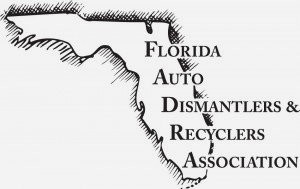Back in the days when your daddy was disassembling Gremlins and Chevelles, there were a lot less things to worry about. Not only have cars become far more sophisticated, but there are now all sorts of environmental and OSHA considerations that you have to stay on top of in this business, or risk a catastrophic penalty.
Back in the day of Darts and Mavericks, sorbents was not even a word—heck, sorbet wasn’t even a word familiar to anyone outside of France. But now we eat our sorbet while worrying about what kind of sorbents we should be using to stay one step ahead of the EPA’s house of pain.
As a specialist in the auto recycling field, HUB Industrial Supply has had to get up to speed with this brave new world of sorbent products right alongside our auto recycling friends so we can provide you with stuff that works and keeps you out of trouble. What follows is a rundown of what we’ve learned about sorbents as it applies to your business:
Types of Sorbents
Let’s start from the very beginning. Sorbents are manufactured in three basic types: Oil Only (white), Universal (grey), and Hazmat (yellow). Our discussion won’t get into the Hazmat category.
Oil Only repels non-petroleum liquids but absorbs oily drips, spills and puddles. It saw a lot of action in the Gulf of Mexico in 2010 containing the BP oil spill and works very well in outdoor applications as it will not get waterlogged.
Booms and Socks are for spill containment: you lay them down to form a border beyond which the liquid cannot venture. Socks are used around the base of a leaky lathe, for example, to keep the oily drip from becoming a safety hazard on the floor. Drip Pans and Pillows do pretty much the same thing. When strategically placed under a leak, it will soak up the liquid drips and contain a much larger volume of liquid without spilling than a catch pan alone.
Pads and Rolls are for either laying down underneath your project or wiping up drips and spills. A new introduction to this format is a poly-backed roll. An available 58-in. x 60-ft. roll is designed to lay poly-side down as a pad large enough and durable enough to provide an absorbent surface beneath a vehicle during disassembly with the slip-resistant poly backing to ensure zero bleed-through to the ground underneath.
Emergency Spill Kits offer a convenient pack of socks, pads, gloves, and waste bag that can be placed strategically around a shop or in a car trunk for fast accessibility when the unexpected happens.
Drum Top is a die-cut product designed to perfectly fit the top of a 55-gallon drum and features cutouts for the two openings of a standard drum lid. It is intended to soak up the puddles that often collect on drum lids. You will be pleasantly surprised at the improvement in the overall sanitation of that corner of your shop when you slap some oil-only covers on your waste drums.
Materials and Finishes
Now for the confusing part: it would be easy enough to understand sorbents if all we needed to know was whether it came in a pad or a sock and if it was grey or white, but these sorbent manufacturers just don’t know the meaning of TMI (too much information). It’s like when you go to buy a dress shirt and you’re faced with a zillion choices like cotton blend or 100% cotton; button-down collar or dress collar; French cuffs or button, athletic fit or …Whew! just give me a SHIRT, OK? Same thing here.
There are sorbents made from petroleum with names like meltblown, and there are sorbents made from recycled products, and on and on. To keep it simple, HUB recommends a material called ColdForm2™ which features the best combination of performance, earth-friendliness, and low cost volatility of all the materials out there. You can get ColdForm2 in grey or white, in any of the forms listed above and in a variety of finishes.
Ah, yes. Finishes. The last parameter of sorbents is how the surfaces of a roll or pad are treated. From least expensive to most expensive, finishes are graded as follows: bonded, laminated one side, laminated both sides, poly-backed bonded, poly-backed laminated, and fine fiber.
For auto recyclers, the most useful of these finishes are the bonded and the laminated. The difference between the two is the laminated is tear- and scuff-resistant to the degree that it can be driven over without damage. The ability to absorb fluids is the same in both cases. The poly-backed, as mentioned before, is a slip-resistant, impervious barrier that will not permit transfer of oil or other fluids through it. Without the poly backing, a saturated sorbent pad can leave behind a small amount of fluid.
We trust you will find this information useful in demystifying the world of sorbents. As always, the best way to really understand a product is to take it for a test drive. Call Leigh or April and ask them to get you some samples of the products you think you’d like to use and you will be on your way to a cleaner, more profitable tomorrow.



